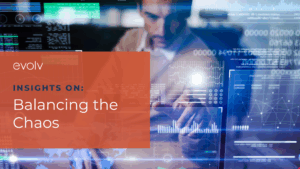Recently, I had the privilege of participating in a panel discussion titled “AI Guardrails: Who Is Responsible for Ethical, Regulatory and Compliant Use?” at the Arts District Mansion in Dallas, Texas. The event was sponsored by Consulting Magazine as part of their Leaders in Technology Industry series. I was joined by legal experts Korin Munsterman and Peter Vogel, and together we delved into the complex landscape of AI, with a particular focus on the emerging field of generative AI.
What is Generative AI, and How is it Changing the Game?
We began by defining AI, acknowledging the many existing definitions. While various interpretations exist, I lean towards the common understanding of AI as algorithms or software that simulate human decision-making. However, the advent of generative AI has significantly shifted this paradigm.
Traditional AI and machine learning (ML) primarily focused on learning patterns in data to make predictions, such as identifying objects in images or forecasting trends. Generative AI, on the other hand, learns these patterns to create new content – text, images, music, and even code. This shift represents a monumental leap, as AI transitions from mimicking human decision-making to mimicking human creativity.
Generative AI models like ChatGPT have captured the public imagination with their ability to produce astonishingly human-like text. However, this newfound power also raises concerns about transparency. As these models grow in complexity, understanding precisely how and why they generate specific outputs becomes increasingly challenging. This “black box” nature of generative AI raises questions about accountability and control.
The Risks: User Privacy and Data Protection
Our discussion then turned to the risks associated with generative AI, particularly in the areas of user privacy and data protection. Organizations often lack transparency about how the data used in prompts might be mishandled or even leaked. A seemingly innocuous act, like a software engineer seeking help from a language model to refactor code, could inadvertently expose proprietary information.
This leads to a critical question: how many organizations have established clear policies regarding employee use of public AI applications? How many have thoughtfully assessed the potential risks versus rewards? In the absence of such policies, organizations are exposing themselves to significant vulnerabilities.
Malicious Use of Generative AI: A Dark Side Emerges
Beyond the inadvertent risks of data exposure, the potential for malicious use of generative AI is a growing concern. Bad actors can leverage these tools to enhance existing threats and devise new ones. For example, generative AI can be used to create highly convincing phishing emails tailored to specific individuals, increasing the likelihood of successful attacks. In fact, shortly after ChatGPT’s release, a security researcher demonstrated how it could be used to craft a sophisticated phishing exploit that, if executed, would install malicious software on a target’s computer.
Additionally, generative AI has the potential to streamline the development of malware, making it more accessible to less technically skilled individuals. This democratization of cybercrime tools could lead to a surge in attacks and pose significant challenges for cybersecurity professionals.
The Regulatory Landscape: A Work in Progress
As with any disruptive technology, the question of regulation looms large. In Texas, the state legislature has seen a flurry of bills addressing AI, but the consensus among our panelists was that these proposals often lack a deep understanding of how generative AI works and the nuances of its risks and benefits.
While I agreed that relying solely on government regulation might not be the most effective approach, I also pointed out that regulation could play a role in ensuring the safety of generative AI, particularly as the technology matures.
Shared Responsibility: A Multi-Stakeholder Approach
The safe and ethical use of generative AI isn’t the sole responsibility of any single entity. It requires a collaborative effort among multiple stakeholders, including:
- Users: Individuals and organizations must exercise caution and critical thinking when interacting with AI-generated content, being mindful of potential biases and inaccuracies.
- Developers: Creators of generative AI models have a responsibility to prioritize transparency, explainability, and safety in their design.
- Hosting Organizations: Platforms hosting AI models should implement robust content moderation policies and take measures to prevent misuse.
- Company Leadership: Businesses must establish clear guidelines for AI use within their organizations, balancing innovation with risk mitigation.
- AI Oversight Boards: Independent bodies can provide valuable oversight and guidance, ensuring ethical considerations are prioritized.
- Government: While regulation should be approached thoughtfully, it can play a role in establishing safety standards and addressing broader societal concerns.
Final Thoughts: Embracing the Potential, Mitigating the Risks
Generative AI represents a transformative technology with immense potential to revolutionize industries, streamline processes, and enhance creativity. However, it also introduces significant risks that must be carefully managed. By fostering a collaborative approach and embracing a shared responsibility model, we can harness the power of generative AI while safeguarding against its potential pitfalls.
The conversation around AI guardrails is ongoing and evolving. As we navigate this uncharted territory, it’s imperative that we remain informed, adaptable, and committed to ethical principles. The future of AI is in our hands, and together, we can shape it into a force for good.



